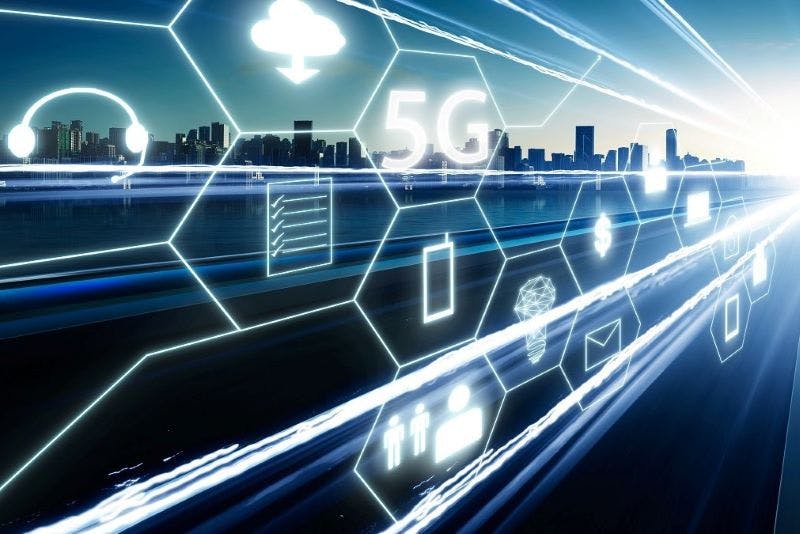Home


Resource Center
5G is finally here. After years of hype and excitement, major carriers have finally managed to deploy their initial nationwide networks. These networks are expected to grow at a steady pace in the coming years.
5G offers a host of benefits over its predecessors in terms of coverage and connectivity. More importantly, it promises speeds of up to 100 times faster than current-generation technology. The rollout of 5G has even been referred to as the “4th industrial revolution.”
Of course, much of this is hype and theory. By and large, 5G operates similarly to previous generations of cell signals. While there are significant advancements, 5G suffers from similar problems that plague current cellular networks. This includes network saturation and inadequate signal in certain kinds of structures, just to name a few.
The question on everyone’s mind is: How fast is 5G in the real world? Let’s take a look.
Cellular Signal Infrastructure

All the major carriers have spent the last few years trying to build out and augment the necessary infrastructure for 5G. One common saying around industry insiders is, “Wireless infrastructure is primarily wired infrastructure.” They’re talking about fiber-optic data networks, which are required as the backbone between the individual towers and the core network.
To illustrate the importance of this background, in 2017 Corning [GLW] announced their deal with Verizon to supply fiber to the carrier: over $1B dollars for 12 million miles of fiber. This amount is purely for the equipment and does not include trenching and installation, which can actually be more expensive the the equipment itself.
Since the beginning of 2021, they’ve extended their coverage of 5G to more than 75% of the country, with that number expected to rise incrementally.
Of course, the quickest and easiest path to 5G is to build 5G networks on top of existing 4G platforms, meaning 4G and LTE networks will still be around as a fallback option for users and devices that don’t yet support 5G. But for the first time, 5G technology is capable of offering fiber-optic speeds to mobile devices.
As the world becomes more and more connected, underlying network infrastructure plays a big role in cellular connectivity. As mentioned earlier, cellular connections traverse back over existing fiber networks. Like 5G, these networks aren’t yet adequate enough for the growing number of devices, and they need expanding as well. For this reason, all of the major carriers are working on laying thousands of miles of fiber optics to help support 5G speeds.
By 2030, 5G is expected to serve nearly 2 billion people. To be able to fully deliver on the promise of a significant performance increase with 5G, the carriers have a lot of work ahead of them. More and more people are using multiple devices — it’s not simply about a phone anymore. Some of these things include:
- Automated vehicles
- Artificial intelligence devices
- Smartwatches
- Virtual and augmented reality devices
- Telemedicine devices
Delivering on the promise of a 5G network that offers extensive coverage and delivers the bandwidth and latency necessary to support all of these devices is quite the undertaking. It could take several years before it’s truly realized.
An additional challenge for 5G network architects is the difference in spectrum between most existing 3G/4G networks and new 5G networks. The network operators in the United States alone have invested over $100B in mid-band (3-6 GHz) and high-band (24GHz+) spectrum. Due to the physics of RF propagation, these frequencies do not yield the same coverage areas as low-band cellular. So, the existing towers cannot simply be upgraded without leaving significant 5G coverage gaps and holes.
5G’s Theoretical Speeds

Once the necessary groundwork is laid to support 5G fully, the speeds are pretty incredible. In optimal areas, 5G coverage could offer download speeds from 1 Gbps to 10 Gbps, with latencies that could go as low as 1 millisecond.
Taking a closer look at speeds relative to other cellular technologies, you can get a real picture of the kind of performance 5G will offer once it’s truly realized:

Keep in mind, however, that the averages here are only an approximation. Each technology on its own tends to complicate these speed measurements. And of course, these all can vary significantly depending on the kind of device you’re using, what you’re doing with it, and how strong your signal is. Another thing to keep in mind is that each technology advances independently. The latest versions of 4G-LTE, for example, are closing in on 5G’s low-end speeds.
The biggest caveat here is that these numbers are simply standards and theory, which — as you know — doesn’t mean a whole lot in terms of real-world applications.
5G’s Speed in the Real World

Theory is one thing, but how does 5G stack up in the real world? The short answer is, it depends. 5G consists of multiple different frequencies that work in tandem to produce adequate coverage across all the different possible locations and environments.
For example, the low-band spectrum — usually referred to as Sub-6 — is engineered to travel long distances and penetrate structures, but it offers much slower download speeds. The high-band mmWave spectrum, on the other hand, is much faster, but these waves only travel a short distance and they’re blocked by structures, like buildings and walls.
As it stands, all of the nationwide networks work with the low-band spectrum. While there are spots of wwWave coverage here and there, you likely won’t be connected to these very often. So what does all this mean for the numbers?
A recent study by Speedcheck shows that the current average download speed for 5G across all major carriers sits at 59 Mbps. So, in the real world, 5G in its current form isn’t a whole lot faster than 4G-LTE. While it’s still about 2.7 times faster, it’s not the kind of speed you’ll see later when real-world performance reaches theoretical levels.
Not only will the speed vary based on the type of band you’re connected to, but the quality of underlying fiber network infrastructure will be a major factor, too. And as more and more devices connect to these networks, the more data is consumed, the lower the bandwidth. In areas where thousands of people connect to the cellular network, there simply may not be enough bandwidth.
Bridging the 5G Gap

As you can see from the numbers, 5G has a lot of potential, but there’s still a long way to go for the carriers to get the underlying infrastructure to a place where theory meets reality. The gap between real-world speeds and these optimal network conditions could take years. Because of this gap, 5G cellular signal repeaters will play a significant role in delivering 5G speeds to areas that aren’t yet covered.
Signal repeaters have a few key advantages over typical infrastructure:
1. No Data Backhaul Required
Since signal repeaters simply take the existing wireless signals at the edge of the network, amplify them, and forward them, it’s not necessary to supply a repeater site with backhaul. The cost for data to a single site can easily exceed $1,000 per month. This amount becomes very impactful to the total cost of ownership (TCO) for the network provider.
2. No Trenching Required
Trenching, digging a trench for the wired data connection, is required in many new 5G sites. Trenching can be incredibly expensive and onerous. In some cases, it’s nearly impossible to find a suitable route through the given terrain for a trench. It may be land that cannot be disturbed, or the owners of the land may not wish to cooperate with network providers. Or there could be geological obstacles, like canyons, rocky terrain, etc.
In addition to the physical challenges of trenching, there can be regulatory complications in cases where permits are required. Permitting can lead to significant delays, which equates to project delay and lost revenue.
3. Less Expenses
Lastly, signal repeaters are typically orders of magnitude less expensive than base transceiver stations (BTS) or gNb. A CAPEX savings enables network providers to do more with the capital in order to build out better and faster.
Of course, as more and more devices connect to these networks, repeaters will continue to help alleviate overstressed networks. In high-traffic areas, there simply won’t be enough bandwidth to adequately accommodate the myriad of connected devices. Depending on the business and industry, this could mean anything from lost income to life-or-death risks, especially in cases where 5G connects automated devices, industrial machinery or healthcare equipment.
One specific use case is in areas where higher-speed mmWave bands are available but offer inadequate coverage due to structural impediments. Signal repeaters will play a crucial role in capturing these bands and rebroadcasting them so businesses can take advantage of higher network throughput.
Urban landscapes are a prime use case for the mmWave signal repeater (see illustration below). One common approach is to use multiple gNb in a line down the main thoroughfare to provide a coverage baseline, and then use repeaters to point the coverage down side-streets. This approach yields substantial savings in both CAPEX and OPEX without having to over-densify the area with additional signal sources.

Regardless of the barriers to cell signals, repeater technology is essential in relieving network stress and amplifying networks so that mission-critical applications don’t suffer from poor connectivity.
Get in Touch with WilsonPro to Find Out More
If you’d like to find out how you can ensure adequate network communication in the burgeoning 5G era, get in touch with the experts at WilsonPro. We can create and implement customized commercial solutions designed to boost cell signals so your business has the connection speeds it needs.

